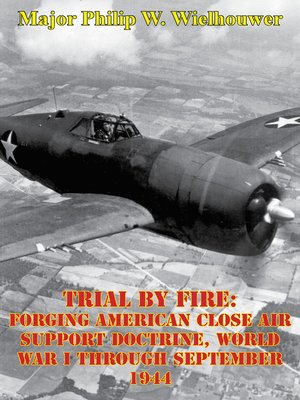Trial by Fire
ebook ∣ Forging American Close Air Support Doctrine, World War I Through September 1944
By Major Philip W. Wielhouwer

Sign up to save your library
With an OverDrive account, you can save your favorite libraries for at-a-glance information about availability. Find out more about OverDrive accounts.
Find this title in Libby, the library reading app by OverDrive.



Search for a digital library with this title
Title found at these libraries:
| Library Name | Distance |
|---|---|
| Loading... |
Proper doctrine for close support of American ground forces by airpower has been a tumultuous issue since the first days of combat aircraft. Air and ground leaders struggled with interservice rivalry, parochialism, employment paradigms, and technological roadblocks while seeking the optimum balance of missions given the unique speed, range, and flexibility of aircraft. Neither ground force concepts of airpower as self-defense and extended organic artillery, nor air force theories focused on command of the air and strategic attack fit the middle ground of close air support (CAS), leaving a doctrinal void prior to American combat in World War II. This thesis focuses on the critical period from September 1939 through the doctrinal and practical crucible of North Africa, which eventually produced a resoundingly successful system. Theoretical and practical changes in organization and command, airpower roles, and the tactical air control system are examined, with subarea focus on cooperation and communications technology. Upon examination, discerning leadership, able to transcend earlier compromises and failures, emerges as the essential element for CAS success during the war. While many airpower concepts proved valid, air-ground cooperation through liaison proved indispensable, a lesson repeated even today.







